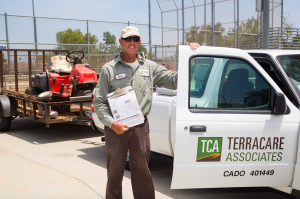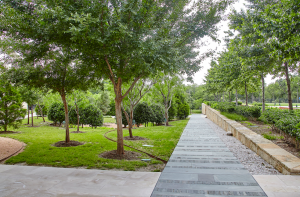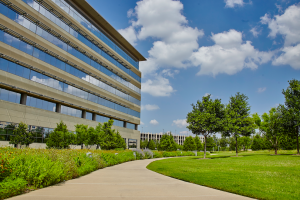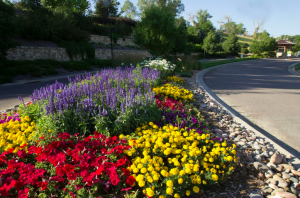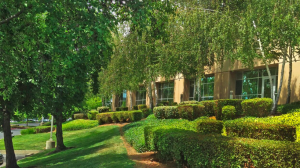The pressure to control costs, while maintaining the value and beauty of your property, is a constant balancing act for many commercial property managers. Maintaining the outside areas of your commercial property is much like maintaining curb appeal for your home. In a recent survey of Society of Real Estate Appraisers, 95 percent of the respondents said professional landscape maintenance adds dollar value and can improve attraction to tenants. The property’s overall landscape, well maintained turf areas, floral beds and trees are the first things a potential tenant will see when evaluating property options. Is your property making an impression?
Think about this when you prepare your annual budgets or when you are vetting bids; your landscape should be a priority, not an afterthought. Consideration should be taken for a variety of landscape projects; curb appeal is important to attract tenants, while water-conservation efforts can reduce costs and meet mandated reductions. Significant landscape projects may be needed, so carefully review projects like turf conversion, enhancement projects, or irrigation repairs before you select your landscape contractor. As a property manager, where do you start in determining what landscape services you need, and what is important?
What a Commercial Landscaping Company Can do for Your Property
Commercial landscaping refers to the management and healthcare of the plants, flowers, turf mowing, trees and shrubs. It also includes necessary maintenance services such as irrigation inspection, storm management, plant health care and water conservation improvements. Because of the inherent differences between residential and commercial property, it is often recommended to seek a contractor that specializes in commercial and public landscape services. As a property manager, having a basic understanding of landscaping services may be critically important when you develop your annual budget. It is also very important when you compare landscapers, as not all provide the same breadth and depth of services.
Key Questions to Ask your Current or Potential Landscape Provider
We have developed a qualifier form to help to evaluate and select a landscape contractor. A sampling of questions are:
- What size property can the landscape provider or contractor adequately service?
- How long has the company been in business?
- Does the contractor have the required liability insurance?
- Are they licensed to apply pesticides and work irrigation systems?
Knowing what you want in a landscape contractor is essential, properly forecasting and budgeting for your needs is the key to a beautifully well-kept property. Terracare Associates – TCA offers a free service to help you assess your property for landscape services and get what you need.
Contact us for more information about how we can provide the kind of landscape maintenance services your property deserves.

